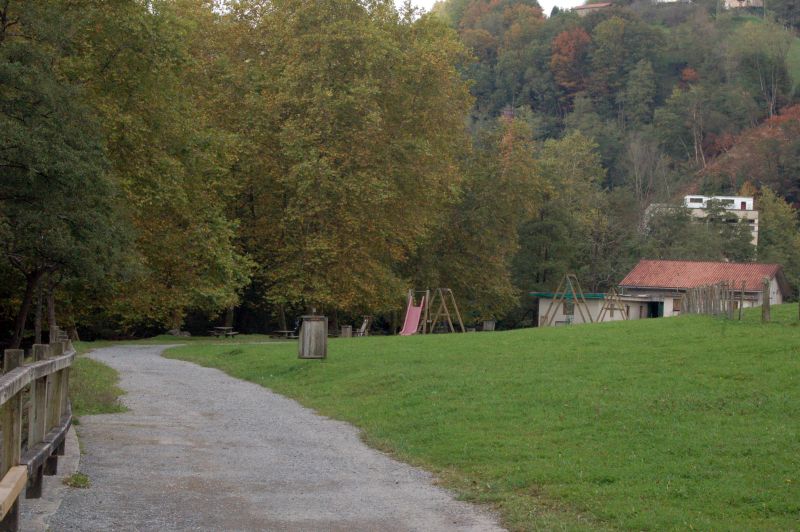
Puntos de Interés

Orography
The Caldera de Taburiente National Park
The Caldera de Taburiente National Park is a natural treasure on the island of La Palma that captivates nature lovers and explorers. Its geological formation, as a volcanic caldera, provides a unique diversity of landscapes, from high peaks to deep ravines, as well as Canary Island pine forests(Pinus canariensis), waterfalls, such as the famous Cascada de Colores waterfall, streams and cliffs, creating a fascinating landscape.
The name "Taburiente" comes from the language of the Benahoaritas, the indigenous inhabitants of La Palma before the Castilian conquest in the 15th century. Although the exact meaning is unclear, it is presumed to be related to the name of an ancient tribe or place on the island.
The Caldera de Taburiente is an impressive natural monument that was formed over millions of years, combining volcanic and erosive processes. It all began approximately 3 million years ago, with a series of eruptions that raised the present-day base of the island from the ocean floor. During the Pleistocene, around 1.6 million years ago, the collapse of the great volcano created a huge depression that gave rise to the Aridane Valley and the famous volcanic caldera. Over time, erosion from fluvial activity has continued to sculpt the caldera to this day, with weathering and other erosional processes shaping the landscape.
The biodiversity of the Caldera de Taburiente is truly extraordinary, with unique species of flora and fauna, which have adapted to the specific conditions of the island and the different bioclimatic levels. From sea level to the 2,426 m high Roque de los Muchachos, the caldera is home to an incredible natural wealth. Among the most notable species are the emblematic Canary Island pine and the fayal-brezal forest. The latter is a plant formation characteristic of Macaronesia, consisting mainly of the species known as faya (Myrica faya) and heather (Erica spp.), which are usually found in areas of higher humidity and altitude, thus contributing to the islands' biological diversity. We cannot overlook the importance of the colourful, reddish and blue flowers of the Echium wildpretii species, which add a distinctive beauty to the landscape. Other species can also be observed, such as the coxcomb (Adenocarpus viscosus) and spurge (Euphorbia canariensis), visible in the drier areas, which also play a crucial role in the botanic diversity of the area.
In terms of animal biodiversity, the Caldera de Taburiente is home to a fascinating variety of species that contribute to the wealth of its ecosystem. Among the majestic birds that inhabit this environment, we find not only the kestrel (Falco tinnunculus) and the palm crow (Corvus monedula hesperius), but also the canary (Serinus canaria), endemic to the region, which brings a special singularity to the local birdlife. Other notable birds include Bulwer's petrel (Bulweria bulwerii) and the peregrine falcon (Falco peregrinus), which find the park's diverse habitats an essential refuge.
In the reptile kingdom, the La Palma giant lizard (Gallotia auaritae) stands out as a unique species on the island. The wealth of insects also contributes to the biological diversity of the park. Among them, the Caldera beetle (Apalus bimaculatus) and the lemon verbena butterfly (Pyronia bathseba) are examples of the numerous species that find their home in the varied habitats that make up the park. The conservation of these habitats is essential to preserve the integrity of the endemic fauna and to ensure a sustainable ecological balance in the region.
That's why the Caldera de Taburiente is protected as a National Park, with the status of Biosphere Reserve and Special Area of Conservation under the Natura 2000 Network. This protection status is of critical importance not only to preserve biodiversity, but also fundamental ecological processes. These unique habitats benefit from exceptional climate values, such as subtropical conditions and the influence of the trade winds, contributing to the formation of diverse microclimates.
For hiking enthusiasts, the park offers a network of trails, the "Sendero de los Roques" being one of the best known, offering breathtaking panoramic views of the caldera and, on a clear day, of the islands of Tenerife, El Hierro and La Gomera. Its remote location and low light pollution make it an ideal place for astronomical observation, contributing to La Palma's recognition as a Starlight Reserve. That is why, on the summit of the Roque de los Muchachos, there is the telescope array of the Roque de los Muchachos Astronomical Observatory, a place of astronomical research of worldwide scientific relevance.
Culturally, the Caldera de Taburiente has a special significance for the people of La Palma. Before the Castilian conquest, it was considered sacred by the Benahoaritas, the original inhabitants of La Palma, who saw it as a spiritual place and home to the sun god Magec. After the conquest, the area was used for agriculture and livestock farming, leaving traces of human intervention in the area, such as cultivation terraces and old roads, highlighting the high water value of the caldera. In short, the Caldera de Taburiente is an enriching experience, both in terms of nature and history.


